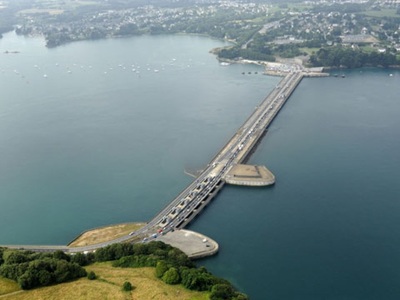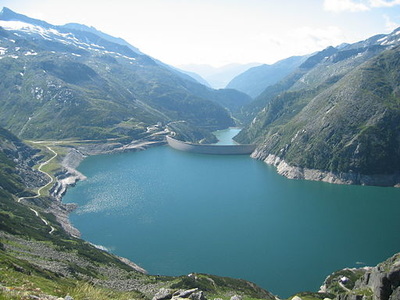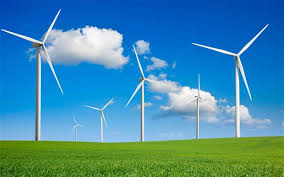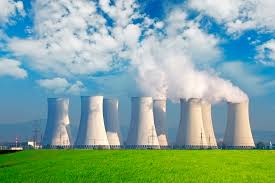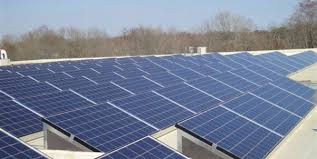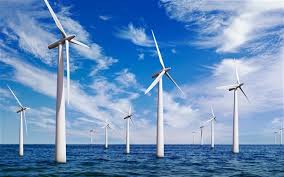Low Carbon Technologies and the Environment
Low carbon energy technologies have the potential to reduce (and are already reducing) Greenhouse Gas emissions as they will substitute today’s fossil fuel power generation share.
Unfortunately, despite the ongoing technology improvement and knowing the location of the ideal sites for the energy capture, experts have highlighted relevant environmental concerns which could limit the full integration and exploitation of low carbon technologies.
Both, detrimental and beneficial, together with long term and cumulative impacts need to be identified and quantified previous to the development, and strategically plan a sustainable and environment-friendly deployment and management of the technologies.
Technologies' life cycle particularities and site-specific conditions will determine the degree to which low carbon technologies impact the environment. Hence, here we solely present a broad review of the main environmental concerns from the various low carbon technologies, which form the future scenarios of electricity supply considered in this project.
Unfortunately, despite the ongoing technology improvement and knowing the location of the ideal sites for the energy capture, experts have highlighted relevant environmental concerns which could limit the full integration and exploitation of low carbon technologies.
Both, detrimental and beneficial, together with long term and cumulative impacts need to be identified and quantified previous to the development, and strategically plan a sustainable and environment-friendly deployment and management of the technologies.
Technologies' life cycle particularities and site-specific conditions will determine the degree to which low carbon technologies impact the environment. Hence, here we solely present a broad review of the main environmental concerns from the various low carbon technologies, which form the future scenarios of electricity supply considered in this project.
Solar Energy
PV and solar thermal do not produce any by-product waste during power generation, and also contribute in the reduction of GHG. However other impacts to land, air, water and ecosystems can be generated during the production of the structure of the technology. PV industry, as an example, uses toxic gases in their production, which if not taken care can end up being wrongly disposed. Thanks to the restrictive policy on hazardous waste release the impacts are likely to be minimal.
Land use is one of the main concerns when it comes to vast solar farms, which extendedly substitute farming or other usage of the land.
The estimates for the PV life cycle carbon emissions range from 30 to 80g CO2eq/kWh, which vary depending on the cell typology.
Land use is one of the main concerns when it comes to vast solar farms, which extendedly substitute farming or other usage of the land.
The estimates for the PV life cycle carbon emissions range from 30 to 80g CO2eq/kWh, which vary depending on the cell typology.
Ocean Energy
The harvest of ocean energy is on the rise and under ongoing technical research, given the high potential of tidal and wave power in certain locations and the need to extend the renewable power generation share. Nevertheless, in our future supply scenarios we have only considered tidal barrage systems as a proven and established ocean energy technology.
The disruption of water flow generates current and tidal range changes which lead to an increase of local erosion, a decrease of suspended sediments in the water column and several habitat structural changes or losses.
Intertidal, sand marsh and mud flat habitats will be the most affected, normally fragmented or lost. This implies a great impact over bird and fish species populations supported by these habitats and their communities. Species displacements due to habitat loss or fragmentation experience a fitness reduction and are exposed to higher mortality rates. Also, fish migration disruption due to the damn seems to be a cause of unsuccessful spawning and mortality.
Also fish seem to be affected by the submerged turbines causing direct mortality.
According to various lifecycle assessments GHG emissions from both, wave and tidal energy systems, are less than 23 g CO2 eq/kWh.
The disruption of water flow generates current and tidal range changes which lead to an increase of local erosion, a decrease of suspended sediments in the water column and several habitat structural changes or losses.
Intertidal, sand marsh and mud flat habitats will be the most affected, normally fragmented or lost. This implies a great impact over bird and fish species populations supported by these habitats and their communities. Species displacements due to habitat loss or fragmentation experience a fitness reduction and are exposed to higher mortality rates. Also, fish migration disruption due to the damn seems to be a cause of unsuccessful spawning and mortality.
Also fish seem to be affected by the submerged turbines causing direct mortality.
According to various lifecycle assessments GHG emissions from both, wave and tidal energy systems, are less than 23 g CO2 eq/kWh.
Hydropower and Pump Hydro
Hydropower plants play a very significant role in the future low carbon configuration of the UK grid, particularly for its pump storage capacity. Nevertheless, significant environmental footprint at local and regional scale can limit its deployment.
Primarily the stream disruption generates hydrological changes that affect the river’s ecology at all levels. Fish and other fauna communities, soil, sediment transportation and riparian forests can be affected by the abrupt change and sudden loss of habitat. However, it seems that in a long term basis the changes can be regarded as positive in a macro ecological scale.
Secondly, the construction of the dam and the flooding require population displacements, loss of archaeological sites and an extended change of land use and farmland relocation, which translates into remarkably intense socio-economic impacts at the site’s region.
Also, the risk of catastrophic dam collapse and the potential complications during construction are significant impacts which can lead to serious and uncontrollable fatalities.
The lifecycle assessment evaluations of GHG emissions for Hydropower and Pump Hydro estimated a range from 4 to 12g CO2 eq/kWh, enclosing all the processes from construction, to dismantling. However, in cases of certain biogeochemical (i.e. eutrophication) water conditions emissions can be higher.
Primarily the stream disruption generates hydrological changes that affect the river’s ecology at all levels. Fish and other fauna communities, soil, sediment transportation and riparian forests can be affected by the abrupt change and sudden loss of habitat. However, it seems that in a long term basis the changes can be regarded as positive in a macro ecological scale.
Secondly, the construction of the dam and the flooding require population displacements, loss of archaeological sites and an extended change of land use and farmland relocation, which translates into remarkably intense socio-economic impacts at the site’s region.
Also, the risk of catastrophic dam collapse and the potential complications during construction are significant impacts which can lead to serious and uncontrollable fatalities.
The lifecycle assessment evaluations of GHG emissions for Hydropower and Pump Hydro estimated a range from 4 to 12g CO2 eq/kWh, enclosing all the processes from construction, to dismantling. However, in cases of certain biogeochemical (i.e. eutrophication) water conditions emissions can be higher.
Wind Energy
Wind energy environmental impacts are present in offshore and onshore installations. One of the main concerns are bird and bat collisions and migration route displacements. These impacts are likely to increase mortality rates and negatively contribute to threaten populations’ recovery. However, design solutions can reduce the risks of these fatalities, and assure a more bird-friendly use of the turbines.
Also, during installation and decommissioning wind farms have local ecological impact, which if not considered in the environmental assessment previous to the installation, can lead to relevant ecological impacts. These ecosystem and habitat modification impacts’ magnitude are site and species specific.
In the case of onshore structures aesthetic issues and land use impacts are usually mentioned as limiting factors.
In both, on and offshore, noise pollution is highlighted as one of the main concerns. The installation, operation and decommissioning noise disturbs the vicinities of the wind farm or, in the case of offshore windfarms, interferes with marine mammal underwater calls.
The GHG emissions of wind energy is estimated to range from 8 to 20 g CO2 eq /kWh.
Also, during installation and decommissioning wind farms have local ecological impact, which if not considered in the environmental assessment previous to the installation, can lead to relevant ecological impacts. These ecosystem and habitat modification impacts’ magnitude are site and species specific.
In the case of onshore structures aesthetic issues and land use impacts are usually mentioned as limiting factors.
In both, on and offshore, noise pollution is highlighted as one of the main concerns. The installation, operation and decommissioning noise disturbs the vicinities of the wind farm or, in the case of offshore windfarms, interferes with marine mammal underwater calls.
The GHG emissions of wind energy is estimated to range from 8 to 20 g CO2 eq /kWh.
Nuclear Power
Nuclear fission power plants have an extraordinarily high energy density compared to the other low carbon technologies and generate no noxious gases during the power generation. Moreover, the land use required for the installation is relatively small in comparison to other technologies.
Nevertheless, the byproduct waste generated, although in small amounts due to the low energy density nature, is highly radioactive, toxic and has a long lifetime. The waste disposal is of complex solution, due to the radioactive nature of the waste it is needed to confine it and isolate it from the environment.
Locally, the mass of water required for the cooling system is affected by an increase of temperature, triggering significant ecological changes that affect the local communities.
The potential catastrophic risk due to cooling system failure could lead to radiological implications which could endure for long time and effect at a global scale.
The direct emission of CO2 from nuclear-power plants is very low. Still, indirect process do contribute to carbon emissions to the atmosphere. The total CO2 emissions from nuclear power plants lifecycle were estimated around16g Co2 eq/kWh.
Nevertheless, the byproduct waste generated, although in small amounts due to the low energy density nature, is highly radioactive, toxic and has a long lifetime. The waste disposal is of complex solution, due to the radioactive nature of the waste it is needed to confine it and isolate it from the environment.
Locally, the mass of water required for the cooling system is affected by an increase of temperature, triggering significant ecological changes that affect the local communities.
The potential catastrophic risk due to cooling system failure could lead to radiological implications which could endure for long time and effect at a global scale.
The direct emission of CO2 from nuclear-power plants is very low. Still, indirect process do contribute to carbon emissions to the atmosphere. The total CO2 emissions from nuclear power plants lifecycle were estimated around16g Co2 eq/kWh.
References:
Alsema, E. A., de Wild-Scholten, M. J., & Fthenakis, V. M. 2006. Environmental impacts of PV electricity generation-a critical comparison of energy supply options. In 21st European photovoltaic solar energy conference, Dresden, Germany (Vol. 3201).
Arvesen, A., and Hertwich, E. G. 2012.. Assessing the life cycle environmental impacts of wind power: A review of present knowledge and research needs.Renewable and Sustainable Energy Reviews, 16(8), 5994-6006.
Department of Energy and Climate Change, 2010, Severn Tidal Power Feasibility Study Conclusions and Summary Report.
Dincer, I. 1999. Environmental impacts of energy. Energy policy, 27(14), 845-854.
IPCC, 2011. Special report of the Intergovernmental Panel on Climate Change. Renewable Energy Sources and Climate Change Mitigation. Summary for policymakers and technical summary.
Moreira, J.R and Poole, A.D. 1993. Hydropower and its constraints. Washington, DC
Moog, O. 1993, Quantification of daily peak hydropower effects on aquatic fauna and management to minimize environmental impacts. Regul. Rivers: Res. Mgmt., 8: 5–14.
Parlimentary Office of Science and Technology. 2013. Environmental Impact of Tidal Energy Barrages. POSTnote Number 435
Ramsay, W. (1979). Unpaid costs of electrical energy: health and environmental impacts from coal and nuclear power.
Rashad, S. M., & Hammad, F. H. 2000. Nuclear power and the environment: comparative assessment of environmental and health impacts of electricity-generating systems. Applied Energy, 65(1), 211-229.
Saidur, R. et al. 2011. Environmental impact of wind energy. Renewable and Sustainable Energy Reviews, vol 15. 2423–2430
Tsoutsos, T., Frantzeskaki, N., & Gekas, V. 2005. Environmental impacts from the solar energy technologies. Energy Policy, 33(3), 289-296.
Wolf, J., Walkington, I. A., Holt, J., & Burrows, R. 2009. Environmental impacts of tidal power schemes. In Proceedings of the Institution of Civil Engineers-Maritime Engineering (Vol. 162, No. 4, pp. 165-177). Thomas Telford Publishing.
